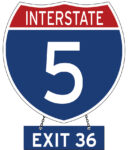 Editor’s Note: This is the 2nd chapter in Volume 3 of Editor Emeritus Donald H. Harrison’s 2022 trilogy, “Schlepping and Schmoozing Along the Interstate 5. All three books as well as others written by Harrison may be purchased from Amazon.com.
Editor’s Note: This is the 2nd chapter in Volume 3 of Editor Emeritus Donald H. Harrison’s 2022 trilogy, “Schlepping and Schmoozing Along the Interstate 5. All three books as well as others written by Harrison may be purchased from Amazon.com.
Schlepping and Schmoozing Along the Interstate 5, Volume 3, Exit 36 (Via de la Valle): La Colonia de Eden Gardens
From the northbound Interstate 5, take the Via de la Valle exit, turn left. Go approximately three-tenths of a mile to Valley Avenue and turn right. The Solana Beach Heritage Museum in La Colonia Park is on the left at 715 Valley Avenue.
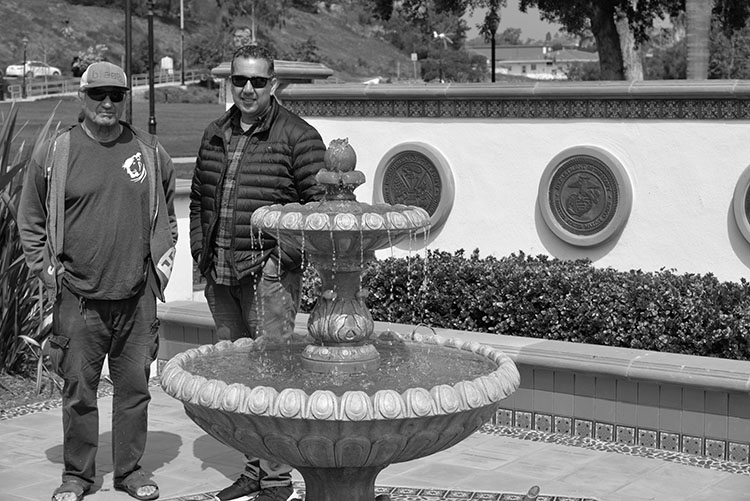
 SOLANA BEACH, California – After the completion of the Lake Hodges Dam on the San Dieguito River in 1918, a fresh water supply for agriculture and gardens in Rancho Santa Fe was assured. A place was needed to house the Mexican workers who had lived in tents while they toiled in the fields and groves of Rancho Santa Fe. Jim Nelson, author of La Colonia & Solana Beach, reported that W.E. Hodges, president of the Santa Fe Improvement Company, decreed that the new lodgings should be kept out of sight of Rancho Santa Fe, which he intended to promote as a “highly restricted, exclusive community of country estates, for gentleman farmers.”
SOLANA BEACH, California – After the completion of the Lake Hodges Dam on the San Dieguito River in 1918, a fresh water supply for agriculture and gardens in Rancho Santa Fe was assured. A place was needed to house the Mexican workers who had lived in tents while they toiled in the fields and groves of Rancho Santa Fe. Jim Nelson, author of La Colonia & Solana Beach, reported that W.E. Hodges, president of the Santa Fe Improvement Company, decreed that the new lodgings should be kept out of sight of Rancho Santa Fe, which he intended to promote as a “highly restricted, exclusive community of country estates, for gentleman farmers.”
Approximately in 1919, Eugene Batchelder, the company’s operations manager, purchased ten acres in what was then known as the Bushyhead/ Stevens Valley from the Stevens family to house the laborers. Prefabricated cabins were put into place, and water was run to the communal shower house. This was the beginning of La Colonia (The Colony), which grew into a vibrant Spanish-speaking community.
In 1922, Batchelder’s enterprising brother-in-law, the land developer Col. Ed Fletcher, acquired 201 acres for a townsite called Solana (Sunny) Beach. A year later, Batchelder acquired 160 acres in addition to the 10 acres of La Colonia. With an eye toward real estate promotion, he named the area as Eden Gardens. The two names were subsequently merged. In 1986, when Solana Beach was incorporated as a self-governing city, La Colonia de Eden Gardens was listed as one of its neighborhoods.
In Genesis 2, as translated from Hebrew by the Art Scroll Tanakh, it says: “2:8 Hashem God planted a garden, to the east, and placed there a man he had formed. 2:9 And Hashem God caused to sprout from the ground every tree that was pleasing to the sight and good for food … 2:19 Now Hashem God had formed out of the ground every beast of the field and every bird of the sky …”
Brian Wiersema wrote an article that appeared May 18, 1984, in the North County Panorama section of The San Diego Union. He cited what could have been similarities between the Biblical Garden of Eden and the Bushyhead/ Stevens Valley from which La Colonia de Eden Gardens grew.
“The narrow valley, resplendent with the rainbow colors of spring ranunculus, looked southwest to the river and to the ocean,” he wrote. It was “protected from westerly ocean breezes and warmed by a sun which seemed particularly generous.” To the east of La Colonia de Eden Gardens, he continued, there “roamed bobcat, mountain lion, and deer. Golden eagles were common. Tens of thousands of marsh birds and ducks wintered in a lake which extended well into the lowlands of Eden Gardens from the San Dieguito River. And on the nearby rocky beach reefs at low tide sat abalone just waiting to be popped off.”
However bountiful Eden Gardens may have been there were some stark differences between the Biblical Paradise and the Solana Beach version. In the Biblical story, Adam and Eve were expelled from the Garden of Eden. It was just the reverse in Solana Beach. As noted, Mexican field workers were moved during the 1920s from Rancho Santa Fe to La Colonia to keep them out of view of prospective buyers of choice real estate. During the 1930s, some Mexican families living along Cedros Avenue in Solana Beach were forced to move into La Colonia de Eden Gardens, which, though a pleasant community, was a far cry from Paradise.
Robert “Chuckles” Hernandez and George C. Wilkens, early residents, provided oral histories to Jim Nelson, which he published in 2002 under the title Early Solana Beach. Hernandez related that his family had lived on Cedros Avenue in the heart of Solana Beach until 1933 when “the Americanos ran us out [and] forced us to move from Cedros. They didn’t want Mexicans there. The Arrispes moved to Cardiff, while my family, the Vallez, and Escovedos moved to La Colonia. … The two American families on the east side of Cedros were allowed to remain.”
In Hernandez’ view, there were some good Americanos. “Mr. Wilkens was a nice man to everybody. But many were not,” he was quoted as saying in the book. “One of the two barbershops in town would not cut Mexicans’ hair but they would cut the hair of the Japanese. We were called ‘greasers’ and ‘cholos.’ And we couldn’t live with the Anglos or go to school with them. But those years are gone and are history and I live and let live.”
When the Mexican families had lived on Cedros Avenue, the children were not permitted to attend the school close by on Rios Avenue, Hernandez recalled. Instead, they were bused to another school for Mexicans. “Being little kids, we didn’t think anything about not being able to go to school with the Americanos.” The “Americanization” school he attended on Genevieve Street in the Colonia was a two-room building in which pupils from kindergarten through third grade were taught in one room and those from fourth grade through sixth were taught in the other. “Years later, I realized the education we received was not very good,” although there were a few good teachers, Hernandez stated.
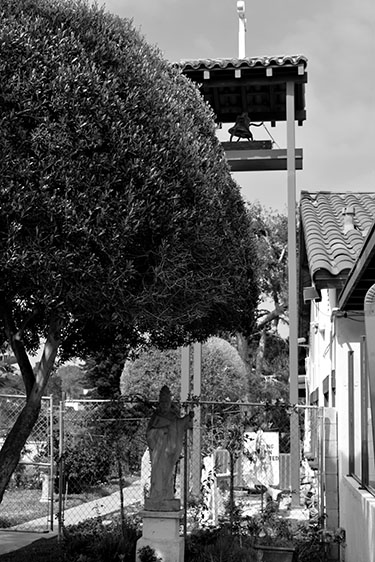
Hernandez continued in school through the ninth grade, then dropped out to earn money picking avocados. After that time, Annabel Larrick, a teacher in the Solana Beach Elementary School, saw Mexican children were receiving inferior educations compared to their American counterparts and pressed successfully for integrating the two groups of school children.
Among the laboring families, there were numerous marriage so that today, many people who live in La Colonia de Eden Gardens are married to each other. As the community developed, laborers’ families bought property, built homes on tree-lined streets, and created a pleasant, well-shaded, middle-class, hillside community. Streets were named for early residents of La Colonia including Castro, Gonzales, Granados, Hernandez, Ida, Junita, Vera, and Viva.
During March 2022, I had the opportunity to interview Al Gonzales, 73, grandson of one of the La Colonia’s original settlers – Jesus Gonzales, for whose family Gonzales Street is named – and Raphael Rodmel, 51, who grew up in La Colonia.
Both men are members of the St. James and St. Leo Catholic Community and take great pride in their community, which they noted is today considered quite fashionable. Unlike the segregated days of the past, Americans of Mexican descent and those of European descent live side by side in harmony. Their children go to the same schools. Homes in this neighborhood easily sell for $1.5 to $2 million or more in today’s real estate market, but Rodemel asks, “Where would we move? This place is Paradise!”
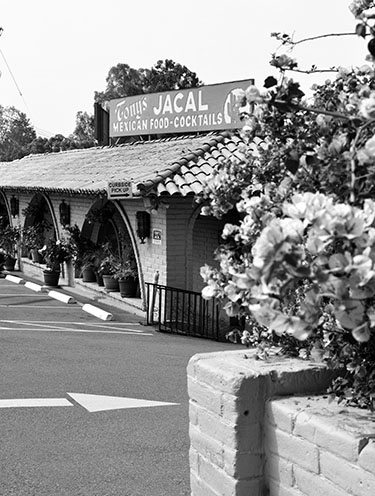
Our meeting was at Tony’s Jacal (Hut), a sprawling restaurant on Valley Avenue with an outdoor patio filled with brightly flowering plants. The restaurant’s founder, Tony Gonzales, who previously worked as a bartender in Del Mar, opened Tony’s Jacal after World War II. He joined the Solana Beach Chamber of Commerce in 1946 and invited his colleagues there to enjoy the Mexican restaurants in La Colonia. They and their families eventually became regular customers. Chico Renteria, a longtime resident of La Colonia, told author Nelson that Gonzales “ended the isolation of the enclave and promoted the integration of La Colonia into the wider coastal community.” La Colonia de Eden Gardens became a “vibrant part of a growing Solana Beach.”
Other restaurants that welcomed Anglo customers included Fidel’s, which still stands, and Don Chuy’s, which no longer is in business.
Besides being neighbors, my lunch partners, Al Gonzales and Raphael Rodeml, also are near cousins through marriage. A web of similar family alliances helps give La Colonia not only a sense of community but also of being a great big, interrelated family. Gonzales told me that in the 1990s, when La Colonia fought a growing problem with drug-dealers, older family members, working with the sheriff’s department, put a stop to it. Teens and young adults who were being drawn into drug trafficking were told in no uncertain terms by their older family members to cease and desist their activities; that they were ruining the community. In an urban setting, perhaps drug dealers might scoff at unhappy residents to whom they felt no connection. But in the Colonia, to go against the wishes of residents meant going against the family.
To provide alternative activities for the youth, Gonzales said he and his wife began a group offering social mixers, ice breakers, sports and various group activities. Gonzales said he also preached the lesson that his grandfather Jesus preached to his son Frank, and Frank in turn preached to Al and Frank’s other children. “Work hard!” was the advice handed down generation to generation. “It is the key to success.”
Al Gonzales worked hard for a brother who owned a successful construction business, building road and other infrastructure projects.
Knowing that I am Jewish, Gonzales wore on his cap a small pin with the flags of the United States and Israel. Today, he and Rodmel are very interested in stories from Hebrew Scriptures. Rodmel, who works in risk management for the PriceSmart Company, has been planning a family trip to Israel. Gonzales told me that when he was a young teenager, with no idea of the import of what he was doing, he drew a swastika on the back of his hand. When his father, Frank, saw it, he angrily covered it with his hand and told Al that the swastika represented the antithesis of their family’s proud American values. It was a lesson that Gonzales said he never forgot.
Today, organizations like the Solana Beach Civic and Historical Society tell of the early history of La Colonia de Eden Gardens and Solana Beach. The Solana Beach Heritage Museum at 715 Valley Avenue is located in La Colonia Park in the ranch house once owned by Susannah Stevens, a member of a pioneer family, for which Stevens Avenue, an important north-south thoroughfare, is named. She and her husband James acquired the ranch in 1891. In 1927, Susannah died at age 105. A community center located at La Colonia Park is neighbored by La Casita de Gloria Teen Center and La Colonia Boys & Girls Club.
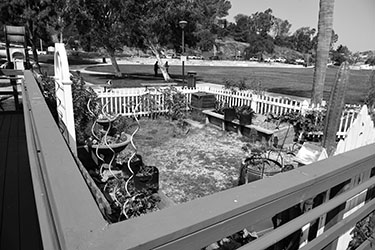
El Jardin de los Niños is also at the site – a garden for children in La Colonia de Eden Gardens. Another garden, located at St. Leo’s Mission, is managed by La Colonia de Eden Gardens Foundation, which allocates plots to families who want to grow their own food and agree to maintain the space.
I asked if the church or other organizations ever utilize the name “Eden Gardens” to teach about the Bible or about horticulture. Does anyone sponsor contests asking artists to imagine what the Biblical Garden of Eden might look like? Has anyone invited herpetologists to give lectures about snakes? Or perhaps have they invited a lecturer to speculate what the “Forbidden Fruit” could have been if not the apple of popular imagination? Are there demonstrations of how big fig leaves can grow and how they might be used as a form of clothing? Gonzales and Rodmel shook their heads. There had been nothing like that, to their knowledge, they said. Perhaps, they added, that is because the name “Eden Gardens” is not as popular as “La Colonia,” which people of Mexican heritage continue to call the area.
Since 2011, La Colonia de Eden Gardens (LCEG), Inc. has partnered with government and non-profit groups in the area to conduct a range of programs for children in the community. Programs include the continuation of after-school tutoring (La Clase Mágica) that had been initiated years earlier by UCSD Communications Prof. Olga Vasquez; self-improvement conversations (Pláticas de Mejorar) led by bilingual therapist Monica Stapleton for women and their families; and Technology Rangers, a program of science, anthropology, art, and history for children between the ages of 5 and 18. The older students may join the Teenology Rangers, which conducts a week-long camp at Lake Arrowhead. The camp engages in such confidence-building skills as tree and rope climbing; art; performance arts; and sports.
During the COVID-19 pandemic, LCEG Inc., reportedly distributed to 65 needy families boxes containing a week’s worth of foods such as milk, eggs, rice, beans, tortillas, fruits, and vegetables. While La Colonia de Eden Gardens has been feeling the effects of raising real estate prices and gentrification, there still are some people in the community living near the poverty line.
In 2020, LCEG, Inc. President Manny Aguilar explained to local television reporters during a food distribution day that some immigrants within the community were very impacted by the pandemic because they were unable to “qualify for a lot of these services that the government provides like the extra check or unemployment benefits, so they are in much more desperation than the average person.” Catholic Charities, working through the St. James and St. Leo Catholic Community, also distributed food to those in need.
*
Donald H. Harrison is editor emeritus of San Diego Jewish World. He may be contacted via donald.harrison@sdjewishworld.com
Thank you, Don. Having been a resident of Solana Beach for 27 years I have often wondered about the history and evolution of Eden Gardens. Thanks for filling in the gaps for me!